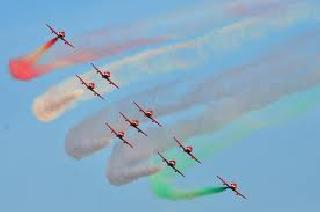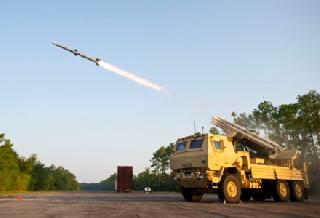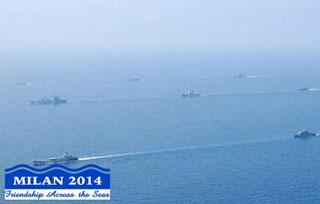
A file photo.
CHANDIGARH (PTI): India has immense potential to become a leader in aerospace industry as the sector is growing at a "faster pace", a senior scientist of Defence Research and Development Organisation said on Monday.
"India has achieved quite a lot in the field of aerospace technologies and there are ample opportunities to become a leader in the field so we have a great future as well," Director General (Missiles and Strategic Systems), DRDO, V G Sekaran said here.
He said there was need of robust aeronautical education programme and aeronautical engineering sector, saying that unmanned aircraft are the future of the industry.
Sekaran said computers can do the same what humans have been doing, adding that, "Unmanned Aerial Vehicle (UAV) technology is a positive step in the evolution of Aeronautics."
UAV Technology has applications in military, security, defence, civil, natural disasters, humanitarian relief, environment, weather and storm tracking, wireless communications, precision agriculture and cargo transport, he said.
Sekaran was delivering a lecture on "Aerospace Technologies and Applications: Present and Future" at the Panjab University campus here.
He said the Indian Aerospace industry is one of the fastest-growing aerospace markets in the world and the rapid growth of this industry has attracted major global aerospace companies to India.
All segments in the aerospace industry, including civil and military aviation and space, are showing a significant level of growth because of which several companies want to be part of the growth story, he said.
He said one would be surprised to know that 110 International Aerospace companies have their headquarters in India.
Sekaran said liberalisation of civil aviation policies, strong domestic manufacturing base, cost advantages and well-educated talent pool were some of the factors driving the growth of India's aerospace industry.
On the Light Combat Aircraft Tejas, he said Tejas is one of the lightest aircraft in the world.
"Tejas has high agility and manoeuvre ability, multi- mission capability, all weather, day and night missions and cockpit compatible with night vision systems. Tejas has the capability to carry precision guided weapons, conventional bombs and rockets, close combat missiles, sensor and pods and high survivability in environment," he said.
About long-range strategic systems, supersonic cruise missile ? BrahMos, ballistic missile defence, composite technologies, futuristic applications, long-range aided navigation system, software engineering and weapon system software, he said the aerospace vehicle system design requires inter-disciplinary involvement.
Stressing that multi-pronged and focused approach is needed for the sector, he said students should not lose interest on the basic sciences.
"We need to build on and nurture basic sciences. It is the reason why DRDO intends to have networking with basic science institutes," he said.
 Previous Article
Previous Article Next Article
Next Article













The Indian Air Force, in its flight trials evaluation report submitted before the Defence Ministry l..
view articleAn insight into the Medium Multi-Role Combat Aircraft competition...
view articleSky enthusiasts can now spot the International Space Station (ISS) commanded by Indian-American astr..
view article